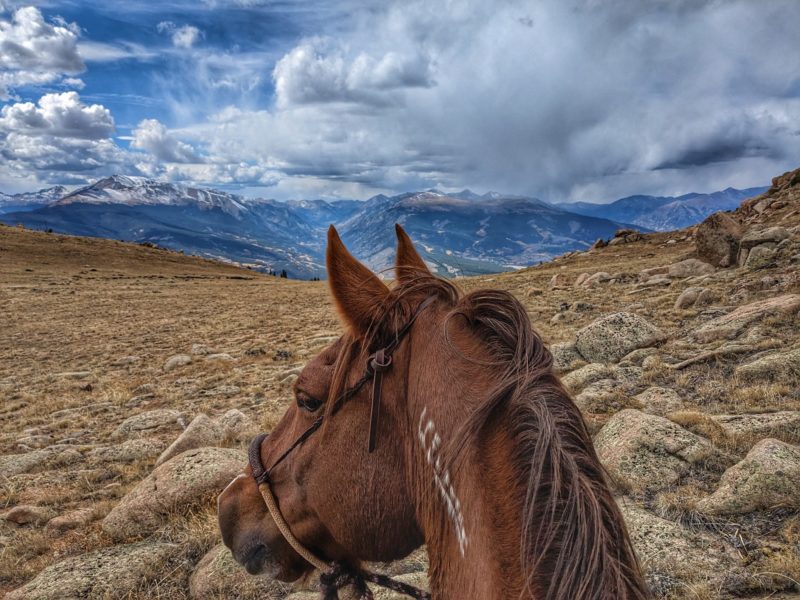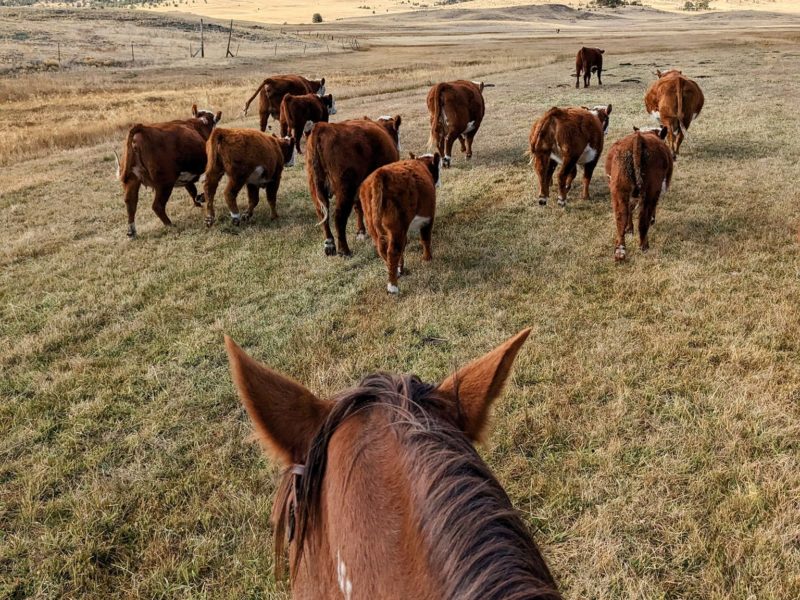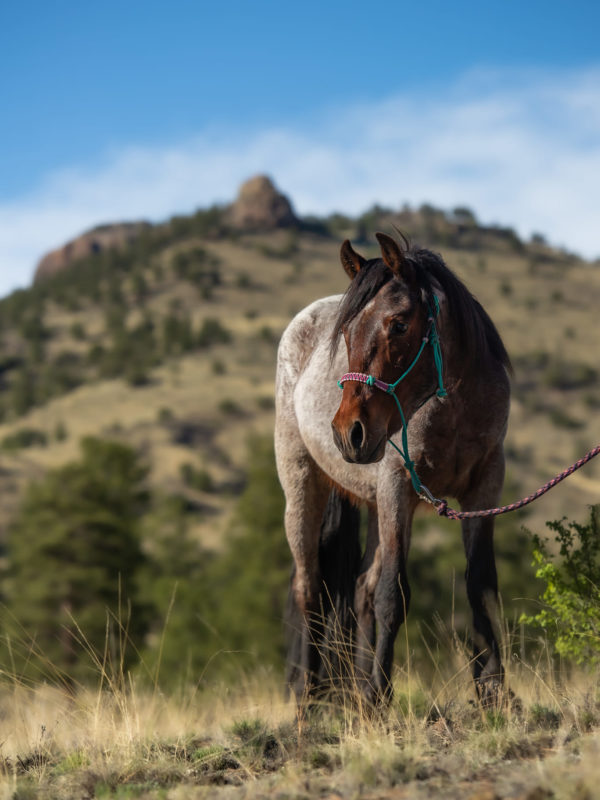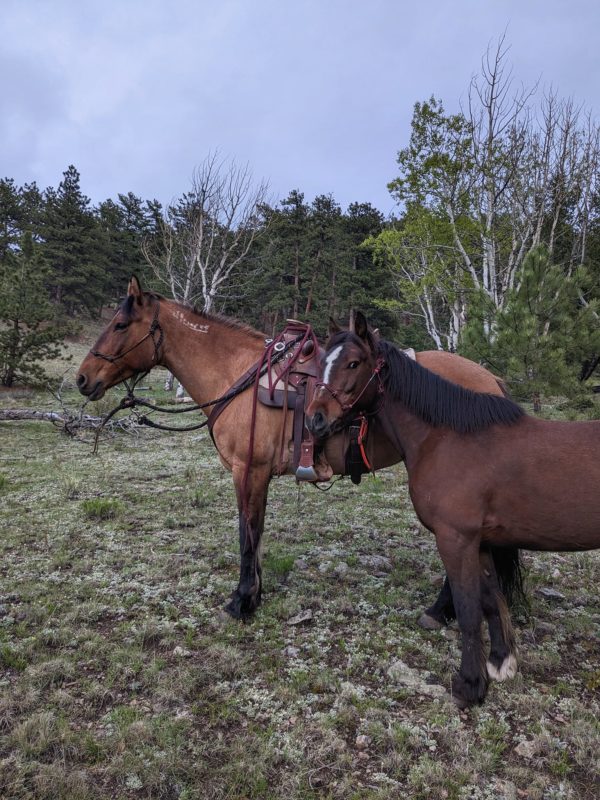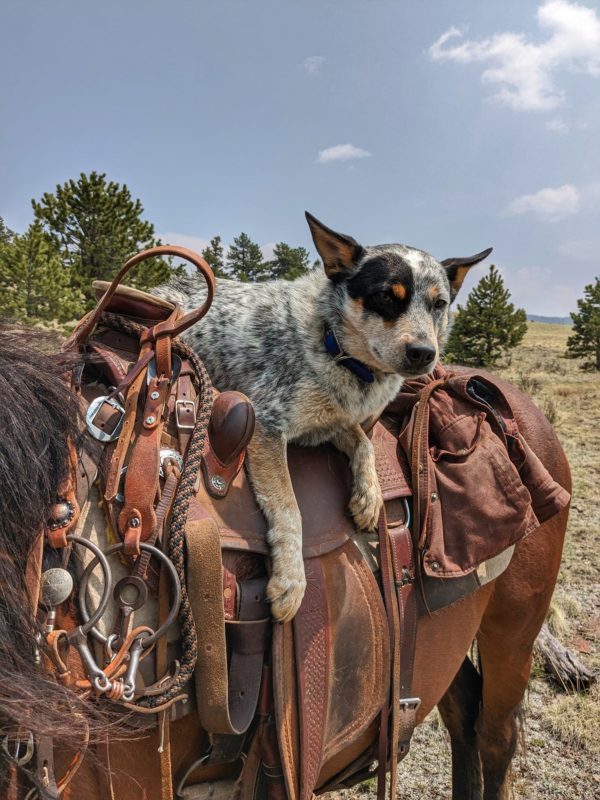This is another one of those “get a Mustang, they said…” stories that are funny and have a lesson hiding in them after the fact but give you ulcers and grey hair throughout their unfolding.
Remember a couple of posts ago when I introduced MustangMatch, a platform for people to list and find Mustangs of all levels of training available for sale or adoption? If you’ve missed it, here’s the link again: https://wildhorseoutreach.org/index.php/mustang-match/
Anyhow, one of the horses on there is Levi, a 9yo Onaqui, UT Mustang gelding, owned by a friend of mine who is moving and therefore rehoming her boy. He’s actually the reason we became friends. Levi, then Napoleon, was a TIP horse I gentled years back. Kait saw him on Facebook and fell in love with his big personality. We’d named him after the tiny emperor for good reason ![😅]()
Kait decided to leave Levi with Wild Horse Outreach & Advocacy so we can find him a good home. He is easy to handle on the ground, as safe as they come under saddle and a fun ride.
I put him in a pen, took him on a couple of rides, turned him out and caught him again the next day just to make sure I could, rode him bareback up the side of a mountain and back down on a stormy evening, and decided to turn him out with the herd for the time being so he could have companionship while he waits for his new person to find him.
Well.
He knows our Ambassador horses, he’s met them all. So I didn’t think much of it when I took him out to summer pasture, 250ac of grassy meadows, steep slopes and lots and lots of trees. I figured he’d go find them and hang out with them – because horses are herd animals, right? – and I’ve put many a new horse in with them over the years.
Wrong.
Levi got out there Thursday morning, reportedly did his own thing until afternoon and then vanished. Poof. No joining the others, no hanging out near the barn or the water source, no grazing in in the valley in plain sight. Nope, gone.
Friday afternoon I rode out after him on Blanca with Petrie in tow and Tiny and the Shepherds following loose. We finally got eyes on him, Tiny said hi, they squealed and if that stinker didn’t take off, tiny feet hammering the ground like the needle on a sewing machine, and disappeared into the timber. There was no way Blanca was keeping up with him in that.
Fine, I thought, he for sure knows where the other horses are now, so leave it up to him to join them.
The next day, no reported Levi sightings, no Ponystang grazing near the herd. So I got on Tiny, took Petrie with me and left Blanca at the barn for ‘bait’. She whinnies a lot when left alone, and I was hoping she’d call him to her. Wrong, but not a total fail… As I was coming back from riding a loop looking for Levi, I could hear him responding to her from somewhere up on the steepest of slopes where the trees are thick and riding near impossible. He wasn’t far but out of reach and sight and I was out of search time for the day but felt somewhat reassured having heard him at least.
Yesterday marked day 3 of my wild horse chase. I was hellbent on getting this guy caught. Having to tell my friend that I’ accidentally misplaced the horse she’d entrusted me with, trying to sleep knowing that he’s by himself in lion country… As much as Levi thinks he’s 18hh and 2,000lbs, he’s a mere 12.2hh small and snack size for a big cat out here without protection from the herd. Fences out here are notoriously on the honor system, with trees falling on them and wildlife or cattle tearing them up, so him getting out and wandering off to who knows where wasn’t exactly impossible either.
Yesterday afternoon, after the worst of the afternoon rains, Lacy and I set out after him. Even when she’s not 100%, this mare has more grit and athleticism than 3 other horses combined. She’s fast and nimble and a mountain climbing fool. It doesn’t hurt that she’s quite popular with the boys, so I was hoping that if we found him he’d be too enchanted to take off again.
We rode some stupid rugged terrain, climbed ridges to peek into valleys, scrambled through draws with downed timber, did cliff hanging on soggy slopes and finally heard an answer to her calls from right above us. As in, straight above us about 50 yards. Looking up I spotted Levi looking down at us. To get to him on a direct route I’d have had to be riding a gecko, so we switchbacked our way up the wet and rocky hill, getting closer as he continued to watch us with his typical dubious Levi side eye.
Getting closer, Lacy gave a friendly nicker instead of an evil grimace which I was very thankful for. The little prince charming approached as I was looking for a place to dismount without falling to my death. Shaking the feed container I’d brought along, I slid off of Lacy’s back, halter and lead rope in hand. The first attempt at catching him failed when he hopped sideways further up the mountain. *Insert expletives here* Another friendly, deep grumble from my comically deceiving and two-faced Mustang mare who knew just what to do when normally she’d be threatening to bite another horse’s head off by now, and I got a rope around his neck and the halter on Levi’s face, shoving a handful of cookies in his mouth as I muttered words that shall not be repeated under my breath.
I could hear the song Amazing Grace playing in my head as I ponied him back down to the truck… something about “once was lost but now am found” seemed rather apropos for the situation.
I hope you enjoy the photos of 2 of my 3 days of chasing a branded, gentled, otherwise friendly and rideable Mustang through the Rocky Mountains, especially the second to last picture of Levi looking mildly offended about his rewilding efforts coming to an abrupt end. First and last picture were taken from Levi’s back while riding the little monster bareback out alone.
![]()







